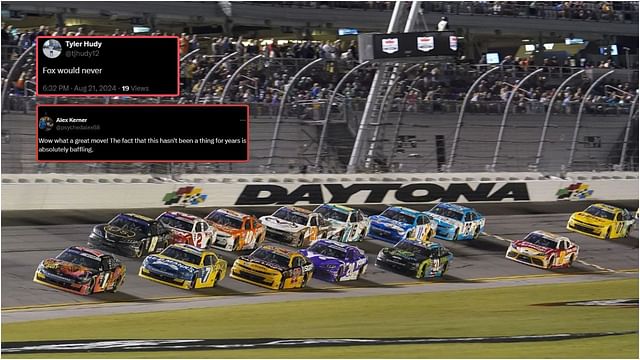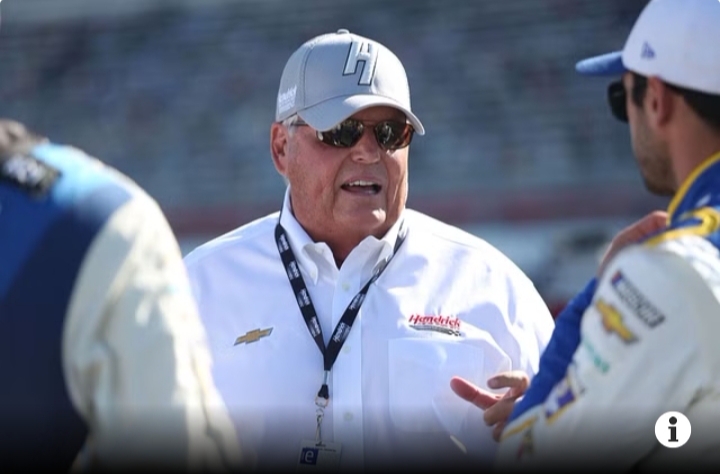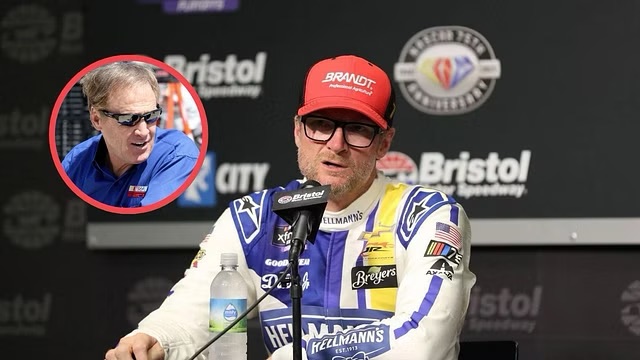NASCAR has recently introduced an experimental approach to their broadcasting format, which could bring significant changes to how fans experience races. Traditionally, NASCAR broadcasts have included full-screen commercial breaks even while races are in progress. However, there are discussions within the organization about modifying this format to enhance viewer experience.
Currently, NASCAR’s broadcasting structure divides coverage between Fox Sports and NBC Sports. Fox handles the first 16 points races of the season, while NBC takes over for the remaining 20 races, including the playoffs. Historically, these broadcasts have been interrupted by commercials, typically after stage completions or during caution periods. This practice, while standard, has been a point of frustration for many fans who feel disconnected from the race action during these breaks.
According to Adam Stern from the Sports Business Journal, NBC Sports is planning to test a new advertising method at upcoming NASCAR events, specifically at the Cup Series races in Daytona, Atlanta, and Talladega. The proposed method involves the use of split-screen ads, allowing the race to remain visible to viewers while advertisements are displayed simultaneously. Stern shared this development on X (formerly known as Twitter), stating:
“@NBCSports is experimenting with how it displays ads during NASCAR races, with a plan to show no full-screen commercials during green-flag action at the upcoming races at Daytona, Atlanta and Talladega.”
This announcement has sparked a variety of reactions from NASCAR fans, many of whom have expressed strong support for the trial. Enthusiastic fans took to social media, with one remarking that Fox Sports, which has maintained the traditional full-screen ad approach, would never consider such an innovative change. Another fan highlighted the overdue nature of this shift, calling it a “great move” and expressing disbelief that it hadn’t been implemented earlier. One fan pointed out that they are more likely to stay engaged with the broadcast if it’s in a split-screen format, rather than looking away or turning to their phone during full-screen ads.
However, not everyone is convinced that this new method will be successful or practical. Some fans raised concerns about how NBC would manage local affiliate obligations, which require a certain number of local ad breaks per hour. These breaks could still occur during green-flag racing, potentially undermining the intended benefits of the new format. One fan suggested that local ad breaks might have to be scheduled during stage breaks to avoid interrupting the race. The complexity of balancing national and local advertising needs without detracting from the viewer experience is seen as a significant challenge for NBC to overcome.
As NASCAR explores this new broadcasting model, it is doing so against the backdrop of a broader shift in its media rights landscape. The sport’s current media rights deal is set to expire at the end of the 2024 season, but earlier this year, NASCAR secured a new $7.7 billion deal that will take effect from 2025 to 2031. This new agreement represents a substantial increase from the previous deal, rising from approximately $820 million annually to $1.1 billion per year.
One of the most notable aspects of this new media rights deal is its inclusion of streaming platforms. For the first time in NASCAR’s history, some races will be available exclusively on streaming services. Amazon Prime Video, for instance, will stream five races along with practice and qualifying sessions during the first half of the season. This marks a significant departure from NASCAR’s traditional reliance on cable and broadcast television, signaling the sport’s adaptation to changing media consumption habits.
NASCAR President Steve Phelps commented on the new media rights deal, emphasizing its role in securing the sport’s long-term stability and expanding its reach. In a statement shared by Fox, Phelps said:
“Our goal was to secure long-term stability with an optimized mix of distribution platforms and innovative partners that would allow us to grow the sport while delivering our product to fans wherever they are.”
Phelps also highlighted the broader implications of the deal, noting that it demonstrates the enduring popularity of NASCAR and its ability to draw large-scale audiences. He described the agreement as a “landmark deal” that offers significant opportunities for the sport to increase fan engagement across a diverse array of platforms, including broadcast, cable, and direct-to-consumer services.
The increase in media rights fees by 40% from the previous agreement underscores the confidence that broadcasters and streaming platforms have in NASCAR’s ability to attract and retain viewers. This substantial financial commitment suggests that stakeholders believe in the sport’s potential for growth, even as the media landscape becomes increasingly fragmented.
As NBC prepares to test its split-screen ad format, the success or failure of this experiment could have far-reaching implications for the future of NASCAR broadcasting. If fans respond positively, it could lead to broader adoption of this approach, potentially setting a new standard for how sports broadcasts are handled. On the other hand, if logistical challenges prove insurmountable, it may reinforce the status quo of full-screen ad breaks, despite the discontent it generates among fans.
The upcoming races at Daytona, Atlanta, and Talladega will therefore be closely watched not just for the on-track action, but also for how well this new broadcasting approach is received. For NASCAR, which is in the midst of significant changes both on and off the track, this experiment represents a crucial step in its ongoing efforts to evolve and enhance the fan experience in an increasingly competitive and complex media environment.
“Fox would never” – NASCAR fans react as NBC reportedly tests new broadcasting format




